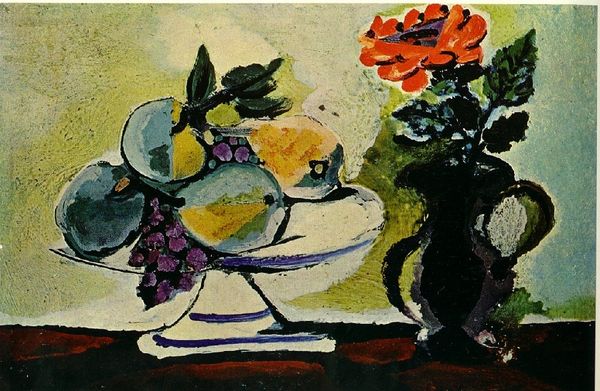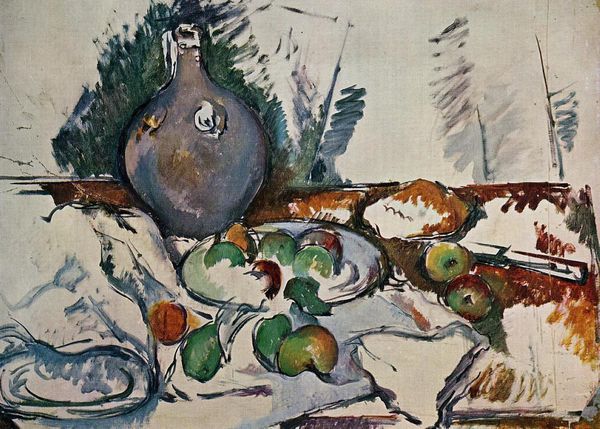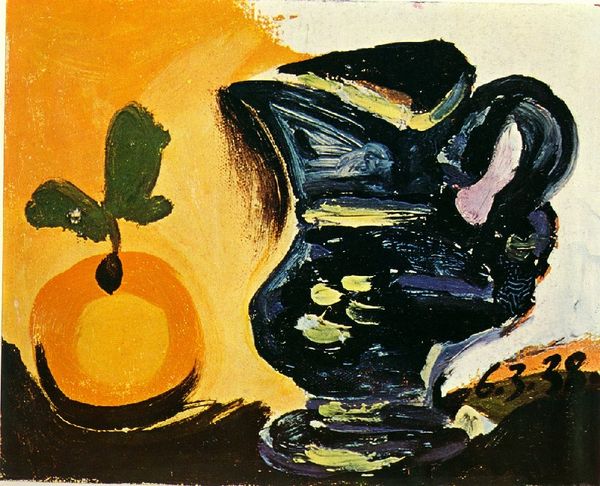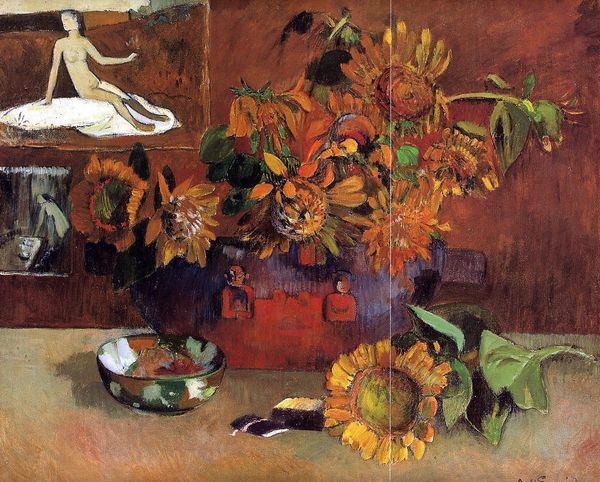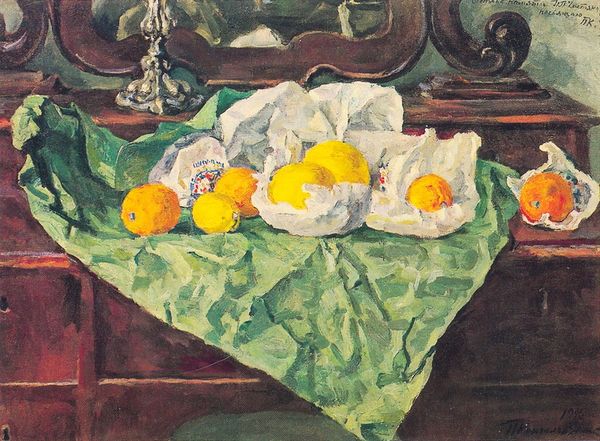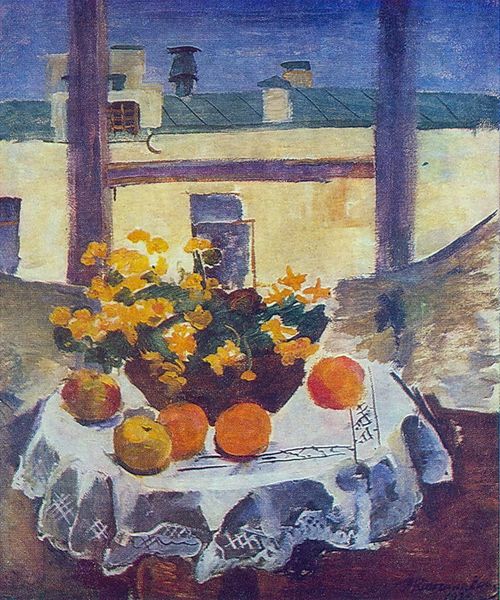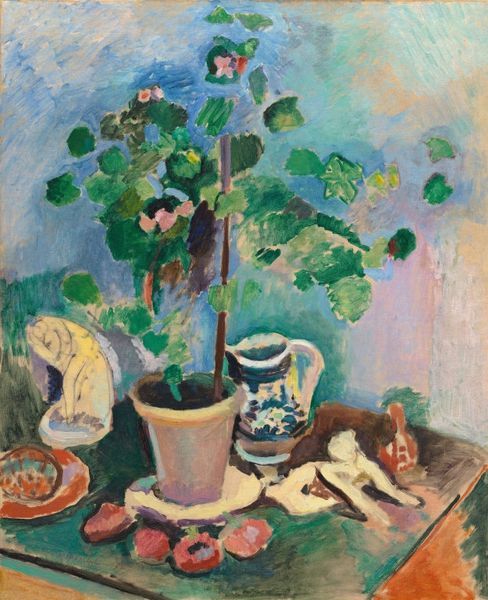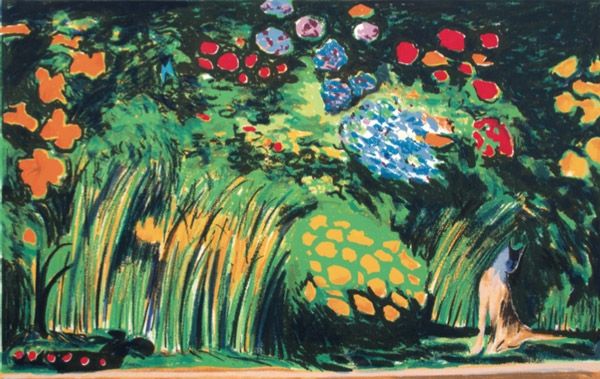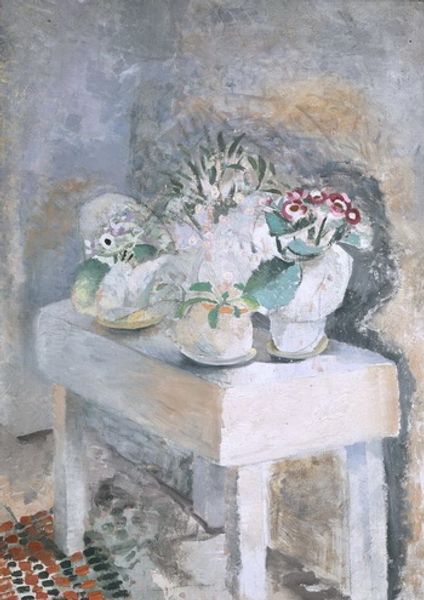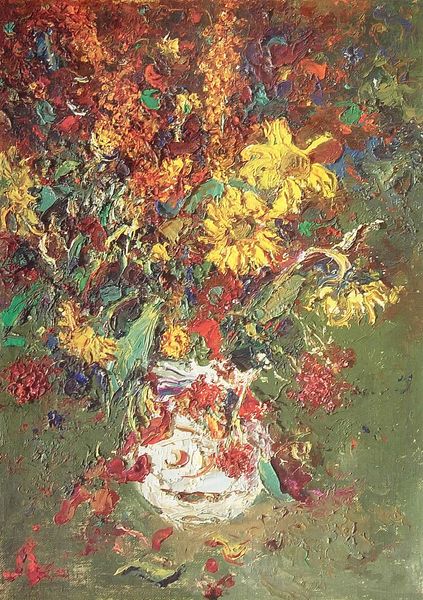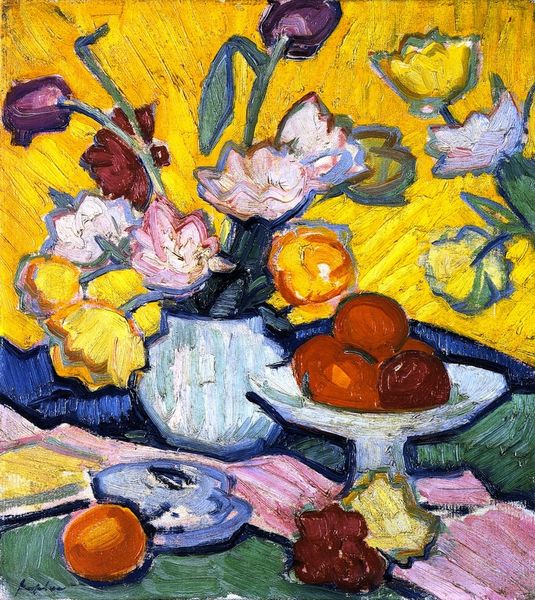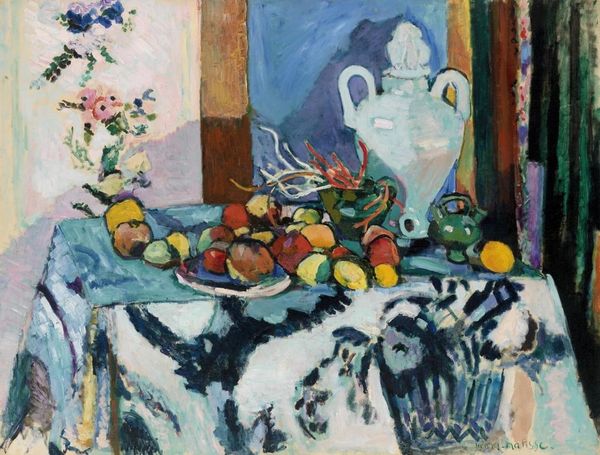
Copyright: Pyotr Konchalovsky,Fair Use
Editor: Here we have Pyotr Konchalovsky’s 1934 oil painting, "Ducklings." It’s incredibly charming! There's almost something unsettling in how the flock is composed, as if representing an entire society. What do you see in this piece? Curator: Well, considering the socio-political context of 1934, deep in the Stalinist era, it's hard not to interpret this innocent scene through that lens. Think about it: collective identity, the group versus the individual. Editor: I hadn't thought of that. It does seem less idyllic now. So, you're saying that the image can represent conformity and the loss of individual identity? Curator: Precisely! The ducklings, all huddled together, seeking nourishment from the same source... Does it evoke any feelings of, say, power dynamics or societal control? Are there further details you may spot? Editor: The way some are facing away, perhaps showing a reluctant participation? Curator: Exactly. And note Konchalovsky’s avant-garde roots fighting to push through the imposed realism. There’s a subtle tension between tradition and the forced, optimistic representational style dictated by socialist realism. Is this visible to your eyes? Editor: It's almost a form of resistance, cloaked in an everyday scene. Thank you for shedding a new light on that artwork! Curator: Absolutely, remember that artistic creation is always intertwined with its historical moment. Art as activism, or perhaps activism subtly infused into art!
Comments
No comments
Be the first to comment and join the conversation on the ultimate creative platform.
